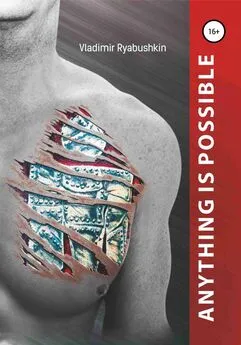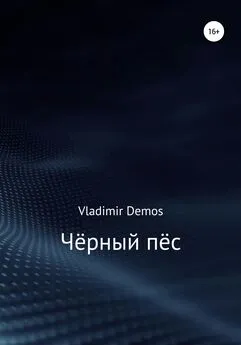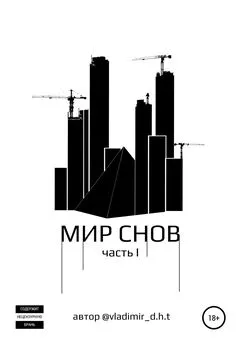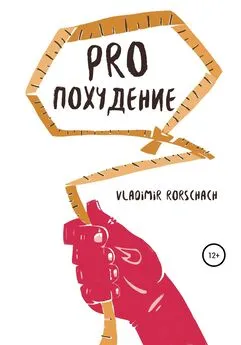Vladimir Ryabushkin - Anything is possible
- Название:Anything is possible
- Автор:
- Жанр:
- Издательство:неизвестно
- Год:2021
- ISBN:нет данных
- Рейтинг:
- Избранное:Добавить в избранное
-
Отзывы:
-
Ваша оценка:
Vladimir Ryabushkin - Anything is possible краткое содержание
Anything is possible - читать онлайн бесплатно ознакомительный отрывок
Интервал:
Закладка:
Be sure to determine your heart rate, otherwise you will train blindly and stupidly.
NECESSARY EQUIPMENT
In order to make your training effective and to succeed in competitions in the future, it is very important to choose the right equipment. Here is a list of necessary items and specific models formed on the basis of my experience:
1) sports watch;
2) velocity sensor;
3) heart rate sensor;
4) cadence sensor (cadence is the rate of the bike’s pedals turning).
SPORTS WATCH. Garmin 910 and later models are, in my opinion, the best in quality-price-capability, proven by time and practice of races. The following data fields on the screen of Garmin 910 are set up for the running stage (Fig. 1):
time (timer); pace; distance; heart rate.
For the cycling stage, the following fields are set up (Fig. 2):
a) on the first page: speed; cadence;
heart rate; slope.
b) 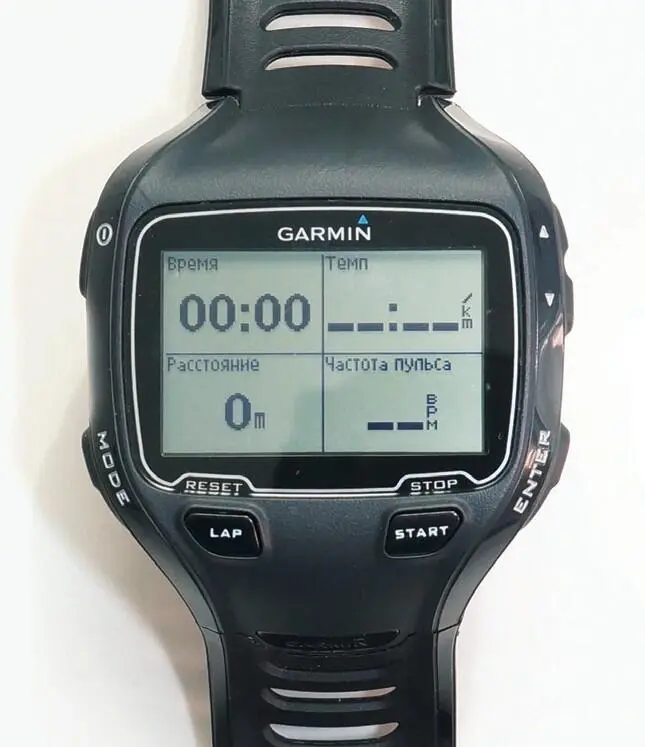 on the second page: speed;
on the second page: speed;
average speed; time (timer); distance.
Fig. 1. Setting up Garmin 910 data fields for the running stage

Fig. 2A, 2B. Setting up data fields on the first and second pages of the cycling stage
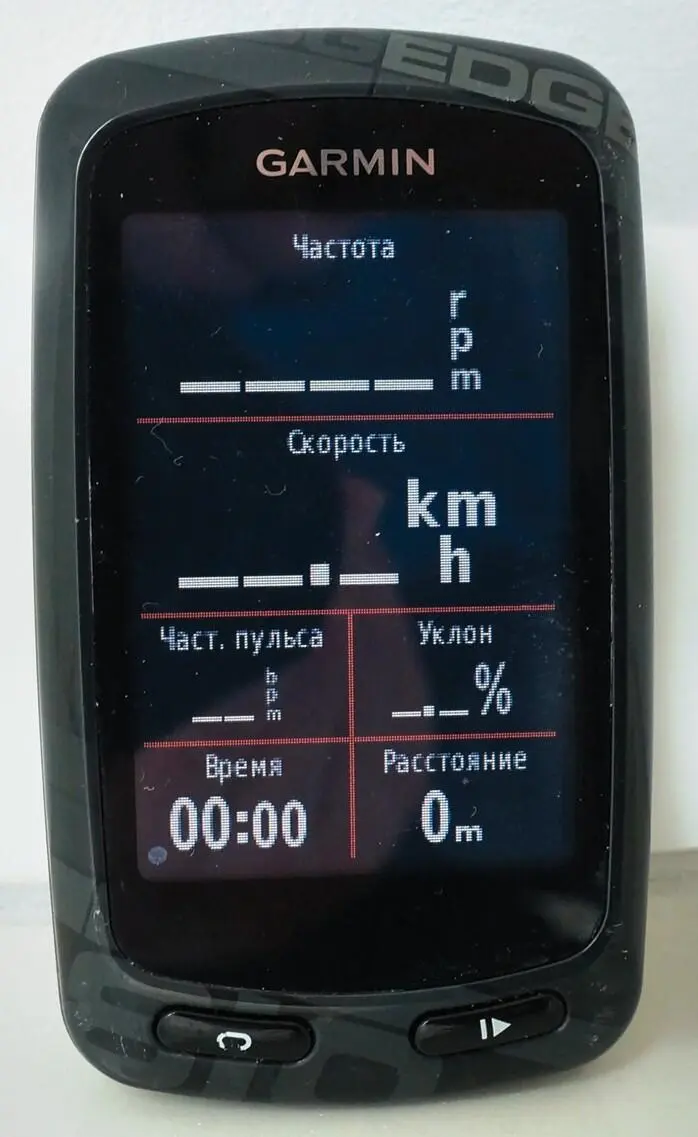 The following fields are set up in Garmin 810 for the cycling stage (Figure 3):
The following fields are set up in Garmin 810 for the cycling stage (Figure 3):
Fig. 3. Setting up data fields of Garmin 810 fields for the cycling
cadence; speed; heart rate; time (timer); distance; slope.
SPEED SENSOR.
Technically, Garmin watches have a built-in GPS sensor that will determine your speed, but its readings depend on the quality of satellite signal reception. With a speed sensor, you will be not dependent on the satellites, and your speed data will be more accurate. But you can easily go without it.
HEART RATE SENSORshows the number of beats of your heart per minute (Fig. 4).
By using this parameter, you can monitor your overall physical condition during training and at competitions, the impact of physical exercise on your body, plan your training loads, analyze the results achieved and determine your progress in sports development. All this is quite possible for an amateur athlete.
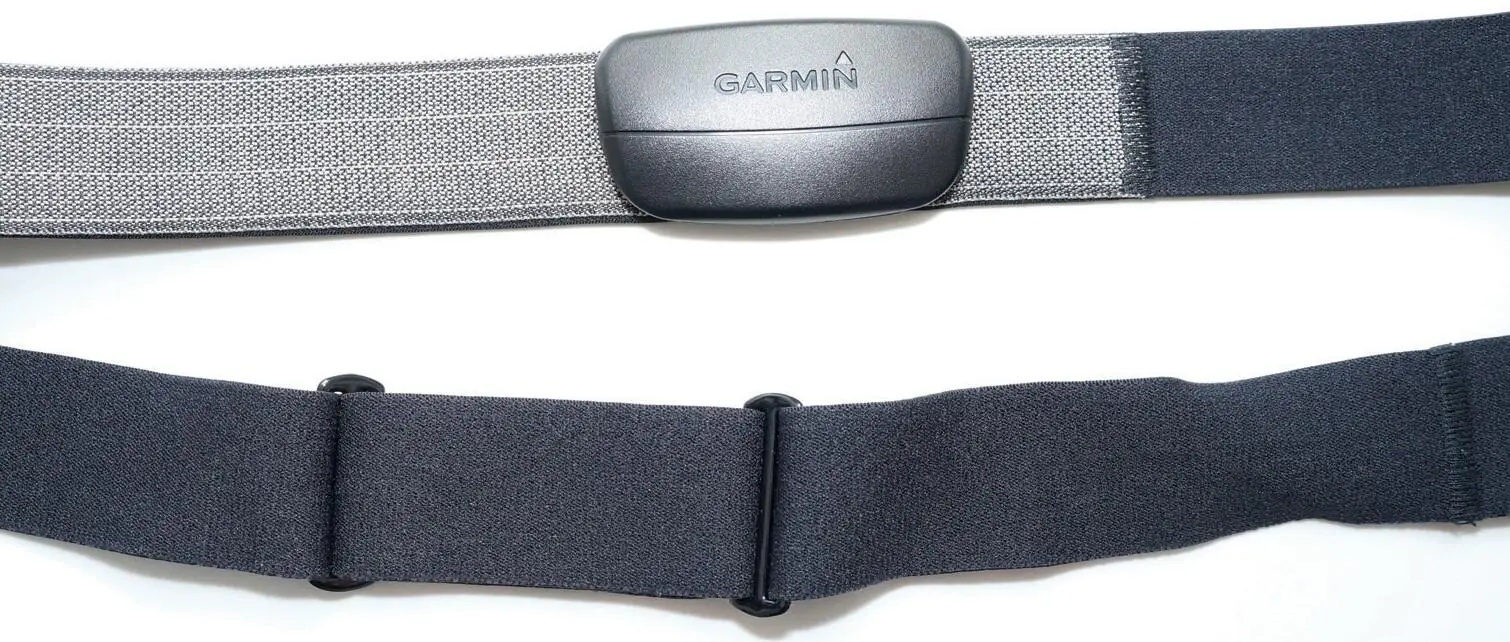 Fig. 4. Heart rate sensor
Fig. 4. Heart rate sensor
It is easy to keep your heart rate in check, just buy a heart rate monitor and connect it to Garmin.
Monitoring your heart rate is the best way to keep an eye on your condition concerning the price-performance ratio. A power sensor can also be used for planning and monitoring your training. This is a very useful but very expensive thing. Relatively cheap models, unfortunately, are not yet reliable enough.
At the initial stage, it will be enough to focus on heart rate monitoring. You need to know and remember: is it possible to overcome the Ironman distance, as well as the Half ironman and the Olympic distance, only in aerobic mode. This is especially true for beginners.
CADENCE SENSORshows the number of pedal revolutions per minute (Figure 5).
This is a very important part of your training. With a heart rate monitor you keep in check your whole body; it helps to protect the heart. Cadence sensor makes it possible to monitor your undercarriage (which is your legs) and optimize the load on them. For the running stage, there is also a special speed and distance sensor, with which you can monitor the cadence, here meaning the number of steps per minute. It is mounted on one of your running shoes and serves as an alternative to the GPS sensor. It is convenient to use it during training indoors, in gyms, on treadmills where it is impossible to catch satellite signal.
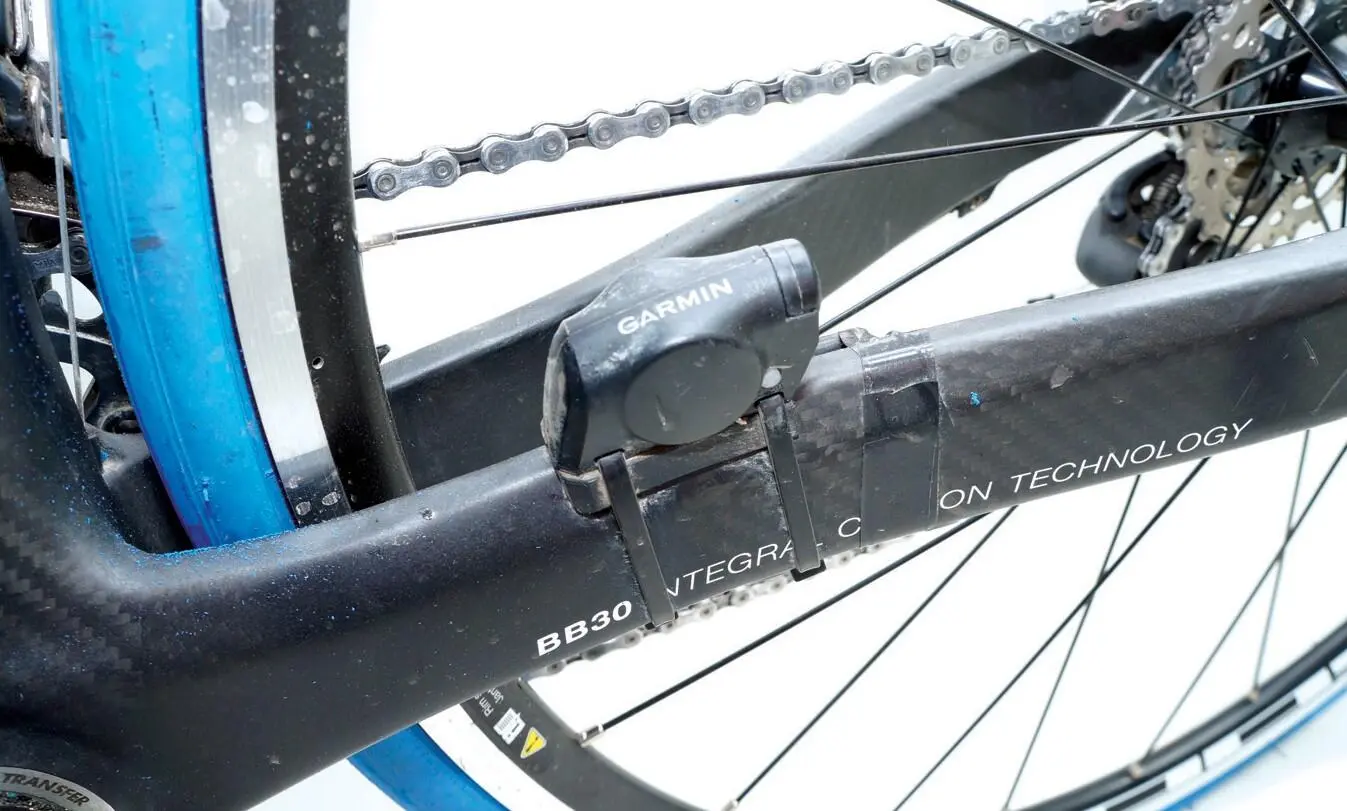
Fig. 5. Cadence sensor
RUNNING TRAINING PLAN
If you are not a former professional athlete and have never run more than 10 km in your life, and there is not much time to prepare for the competition, but you actually want to run a marathon, it is advisable, as I do, to make a running plan for yourself. It is made based on several parameters. It is necessary to know your speed in aerobic and anaerobic modes, the ratio of speed and heart rate, time required for recovery, your general condition and heart rate at different distances, the condition of your legs. It is clear that it is necessary to make training runs, during which the necessary data is collected.
The essence of the technique is to divide the marathon distance into shorter sections. It can be divided into either time or distance sections, as you see fit. Running sections alternate with walking sections. The length of these segments and their
It is necessary to know your speed in aerobic and anaerobic modes, the ratio
of speed and heart rate, time required for recovery, your general condition and heart rate at different distances, the condition of your legs.
combination depends on the individual parameters of each. The scheme also depends on the planned time within which you want to run the marathon.
Ideally, it is a good idea to test the scheme you have made up for yourself in a training run. This can be done at a shorter distance as well, you don’t have to run all 42 km.
It is important to feel comfortable on the distance: running sections should not get you exhausted, and walking sections should be long enough for you to recover.
It is important to feel comfortable on the distance: running sections should not get
you exhausted, and walking sections should be long enough for you to recover.
This may look like this: 10 km running;
1 km walking;
10 km running;
1 km walking;
10 km running;
1 km walking;
9 km running; Total: 42 km.
In total, you are running for 39 km and walking for 3 km. If your running time for 1 km is about 5 minutes 40 seconds, then you will run every 10 km in 56 minutes 40 seconds. The total running time will be 3 hours and 41 minutes. At walking pace of about 9 minutes 40 seconds per 1 kilometer, the total walking time will be 29 minutes. We add up everything and get the total marathon time: 4 hours and 10 minutes. It means 5 minutes 56 seconds per kilometer on average. If you can run 10 km, and 10 minutes of walking is enough for rest and recovery, then you
can say with certainty: you are able to complete the marathon distance, and in a very good time.
I describe this scheme just for clarity, you do not need to stick to it, everyone must find their own. There is an infinite number of variations. The main thing is that if you have decided to run according to the scheme, do not deviate from it.
I’ll warn you right away: you’ll be tempted to run out of the plan. This desire is especially strong at the beginning of the marathon, when you are still fresh, full of strength and energy. Other runners are dashing ahead, the crowd of fans welcomes you and encourages you to keep running without rest. It will seem that you should not waste time on walking, it is quite possible to save time by running not 10 km, but 20 km.
Make no mistake, force yourself to stop and stick to the plan. Otherwise, you're going to have a very tough challenge after 30 kilometers.
If you've been able to put together and practice a marathon plan that is suitable for you, it can be used at Ironman distance as well.
The main thing is that if you have decided to run according to the scheme, do not deviate from it.
No matter how easily you did the marathon, the plan
will still need to be adjusted to take into account that you will run the marathon distance after 4 km of swimming and 180 km of cycling. Believe me, you’ll feel the difference. There is evidence that amateur athletes have about an hour of difference in the resulting time between regular and Ironman marathons, especially beginner athletes. Based on this, you can predict your time in Ironman running stage.
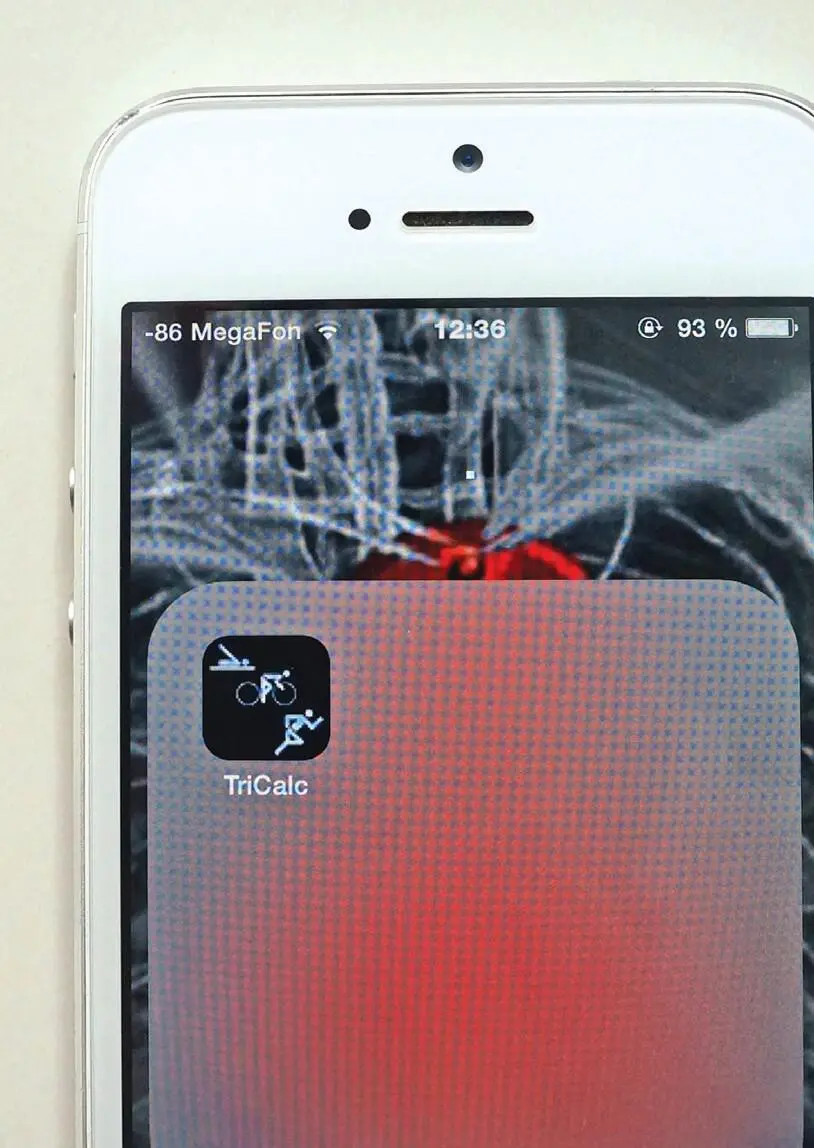 There is a very useful app called TriCalc for pre- calculating the time on Ironman distances. It shows the total time and separately the results of the swimming, cycling, running stages, even the transit time (Figure 6).
There is a very useful app called TriCalc for pre- calculating the time on Ironman distances. It shows the total time and separately the results of the swimming, cycling, running stages, even the transit time (Figure 6).
Fig. 6. TriCalc app
TRAINING
I’m not a coach and can’t make a customized training program for you. All I can do is tell you how I train myself.
I’ll take our training camp in Cyprus as an example. It lasted no longer than 10 days, but in my opinion, it was very intense in terms of training. Every day was similar to another one, the exception was the weekends:
06-00 – waking up;
06-15 – 1 to 2 km swimming in open water; 7-00 – breakfast;
8-15 – 50 to 120 km cycling;
13-00 – lunch;
13-30 – rest, sleep;
16-00 – jogging: 10 to 25 km by distance or 1 to 2 hours by time;
19-00 – dinner; 22-00 – bed time.
Of course, the duration and intensity of training differed from day to day depending on the upcoming race, but the schedule was unchanged. Lovely Cypriot wine and the usual tourist activities were strictly prohibited.
At home, the training program was arranged differently: cycling on Monday;
running on Tuesday; swimming on Wednesday; cycling on Thursday; running on Friday; swimming on Saturday;
the Sunday is a day of rest.
While being in Russia, with all work, family and other chores, it is not always possible to stick to the training schedule, so there are some deviations.
There are different types of training, such as endurance and speed. At the initial stage, it is better to train endurance.
It is optimal to train at a half of the competitive distance, i.e. to swim 2 km, to ride a bicycle 90 km and to run 15 km.
Once a week or two weeks, a single long training is necessary: swim from 3 to 4 km, cycle from 120 to 150 km and run from 20 to 30 km.
If you are working on your speed, interval training sessions will help. Interval training means alternation of intensive physical exercise with short rest periods or light (recovery) loads.
For example, you swim 25 meters at maximum speed and then rest for the next 75 meters (you swim in a relaxed way, probably in a different style).
On a bicycle, you cycle at full speed for 3-4 minutes at most and then you rest for the same amount of time.
On the run you accelerate at a maximum speed of 300-500 meters and then relax for 1 km, reducing the running pace, but not slowing down to walking.
The higher your fitness is, the less time you need to rest and recover.
Please do not treat my proposed
options as a dogmatic statement to blindly follow. There is a lot of possible options, and the choice depends primarily on your level of training.
The higher your fitness is, the less time you need to rest and recover.
You should do some speed training to improve your performance as well,
You should do some speed training to improve your performance as well, but proceed to it only after having
Читать дальшеИнтервал:
Закладка:
